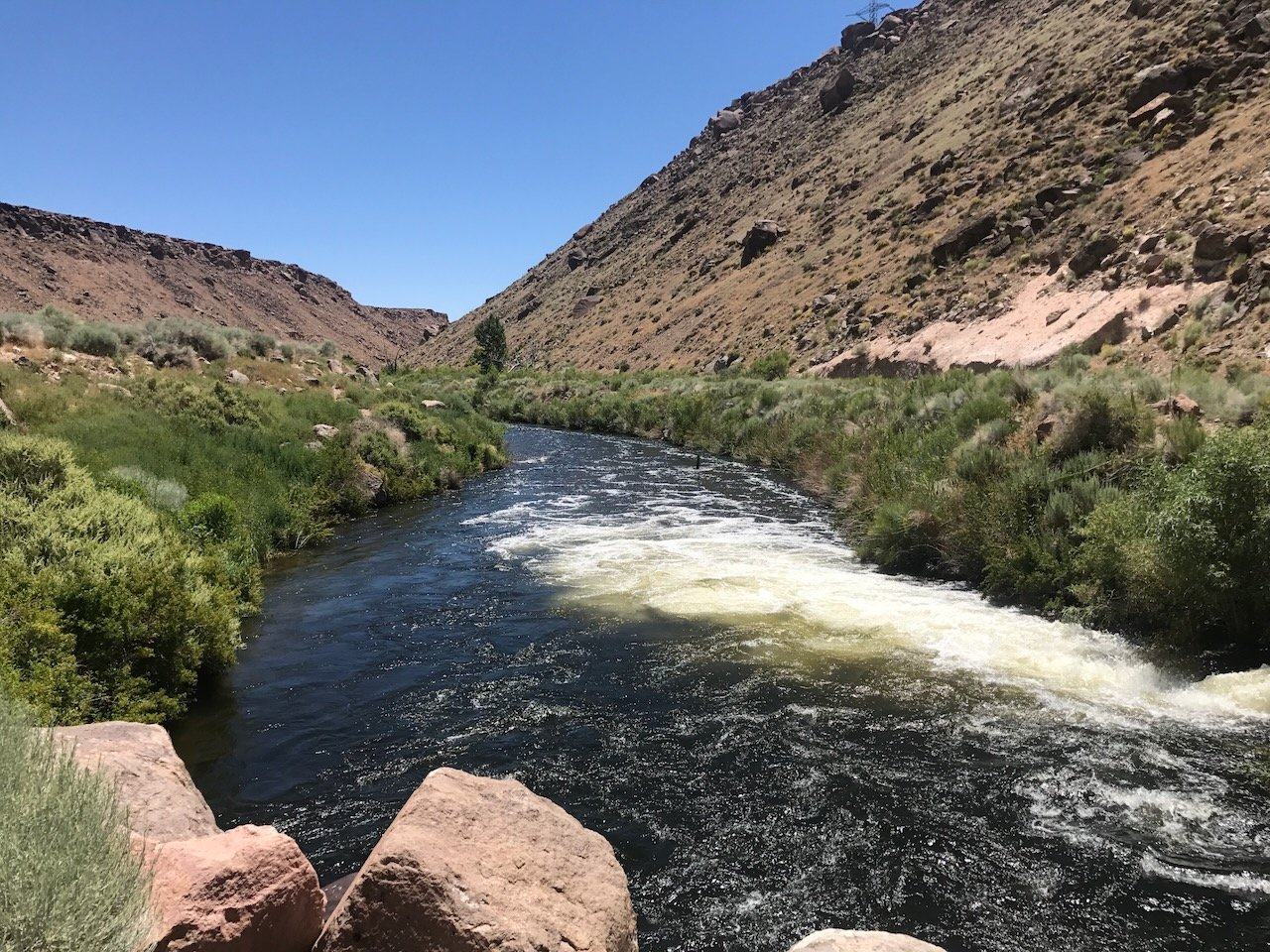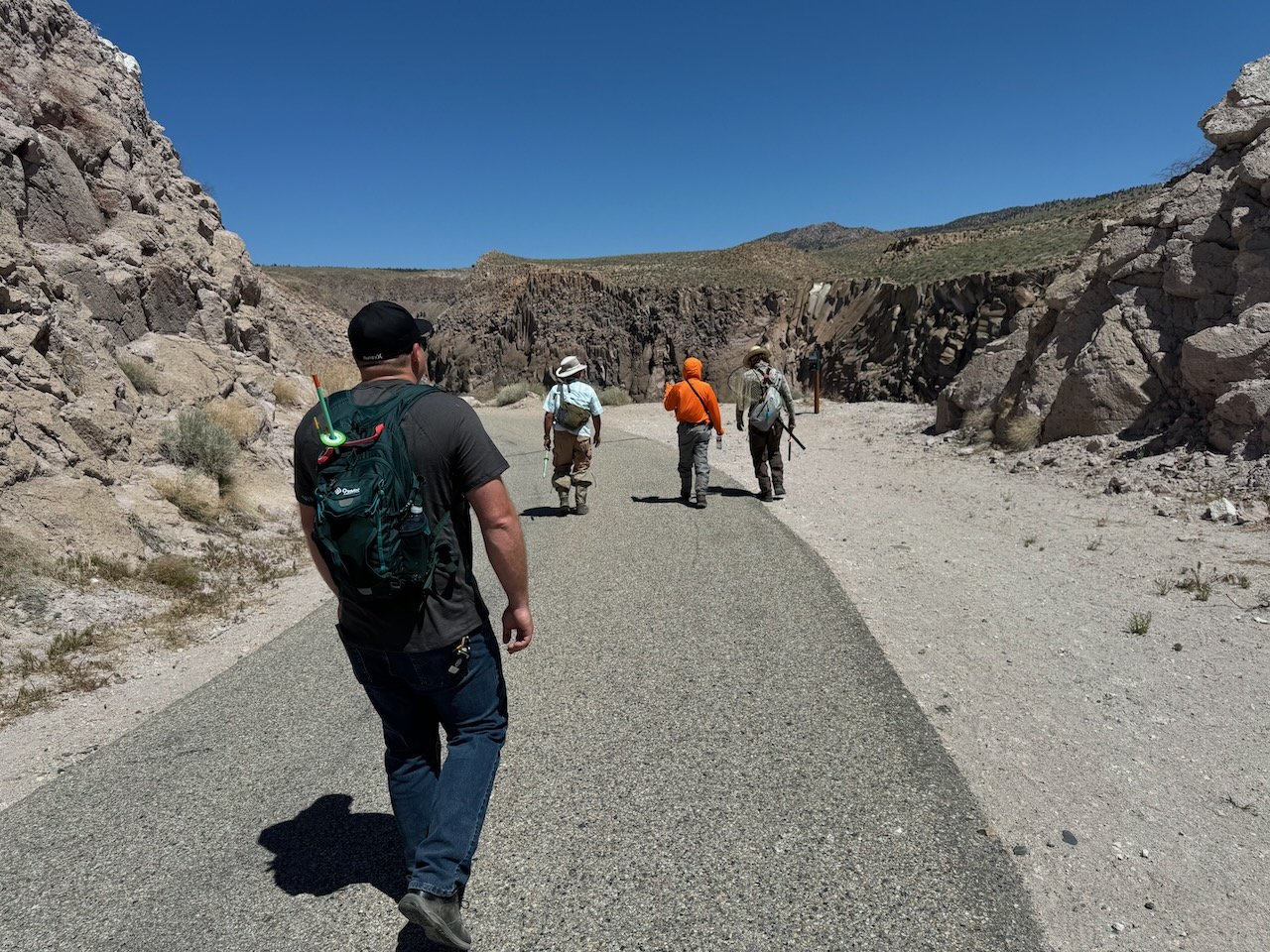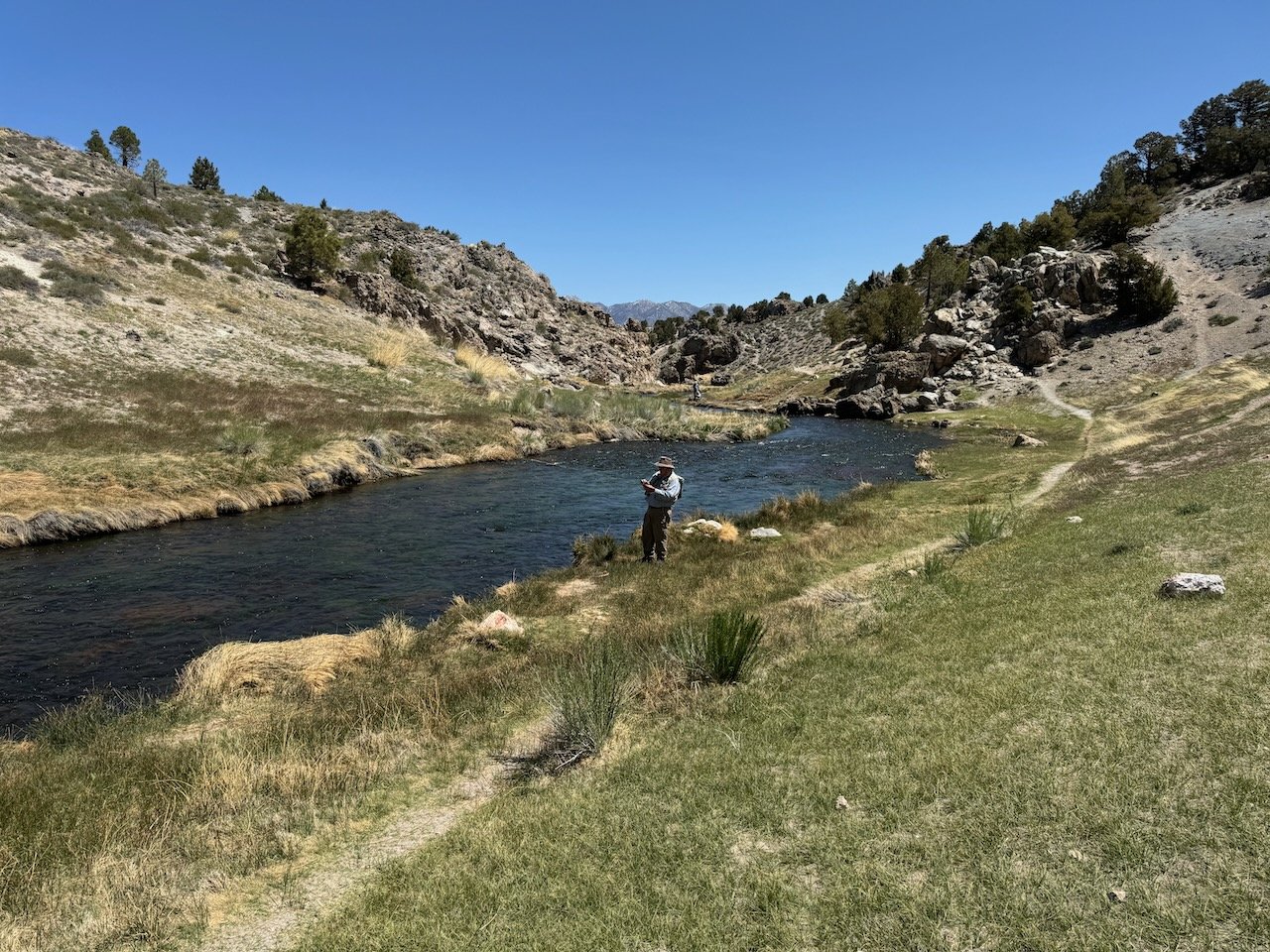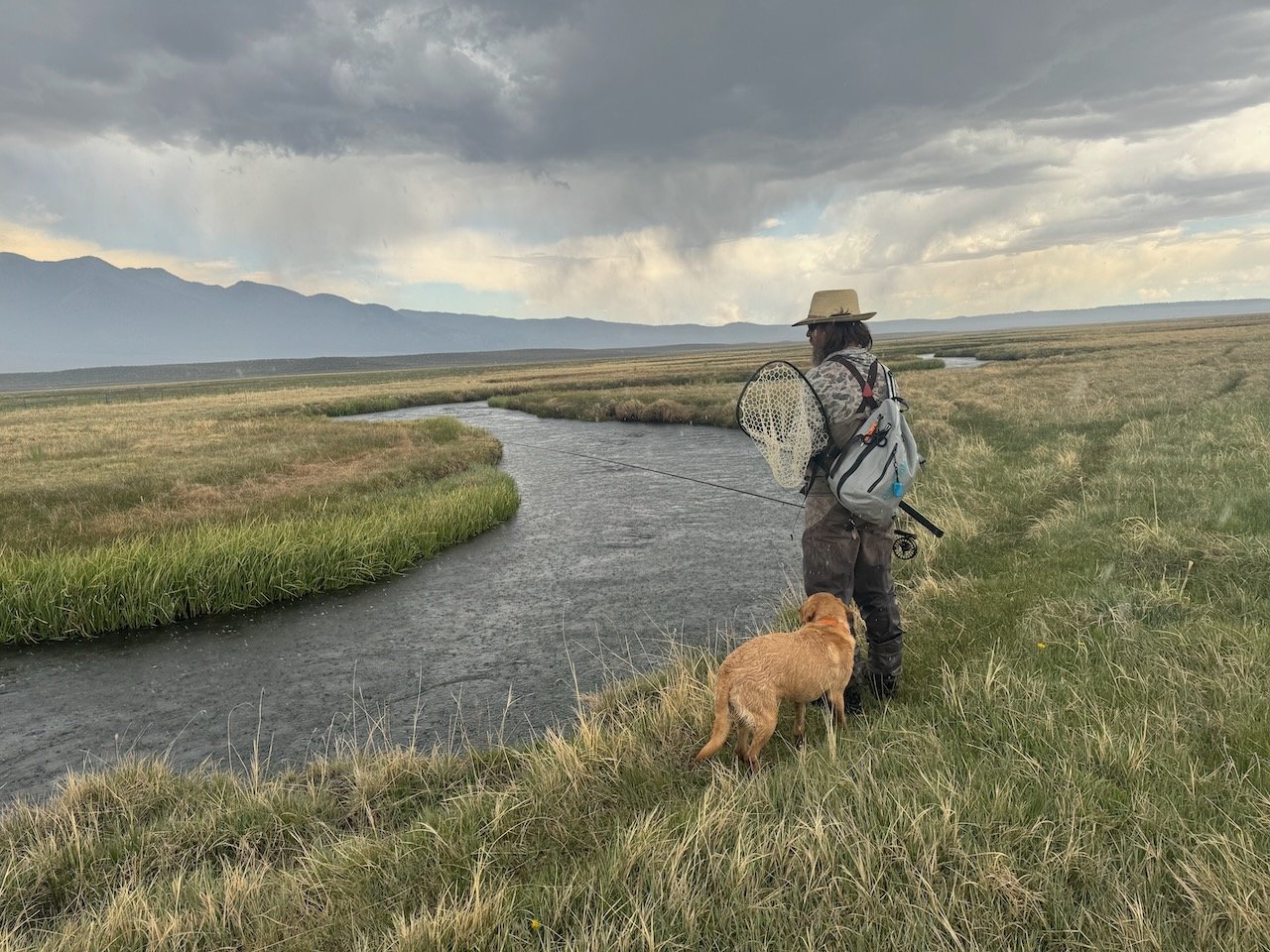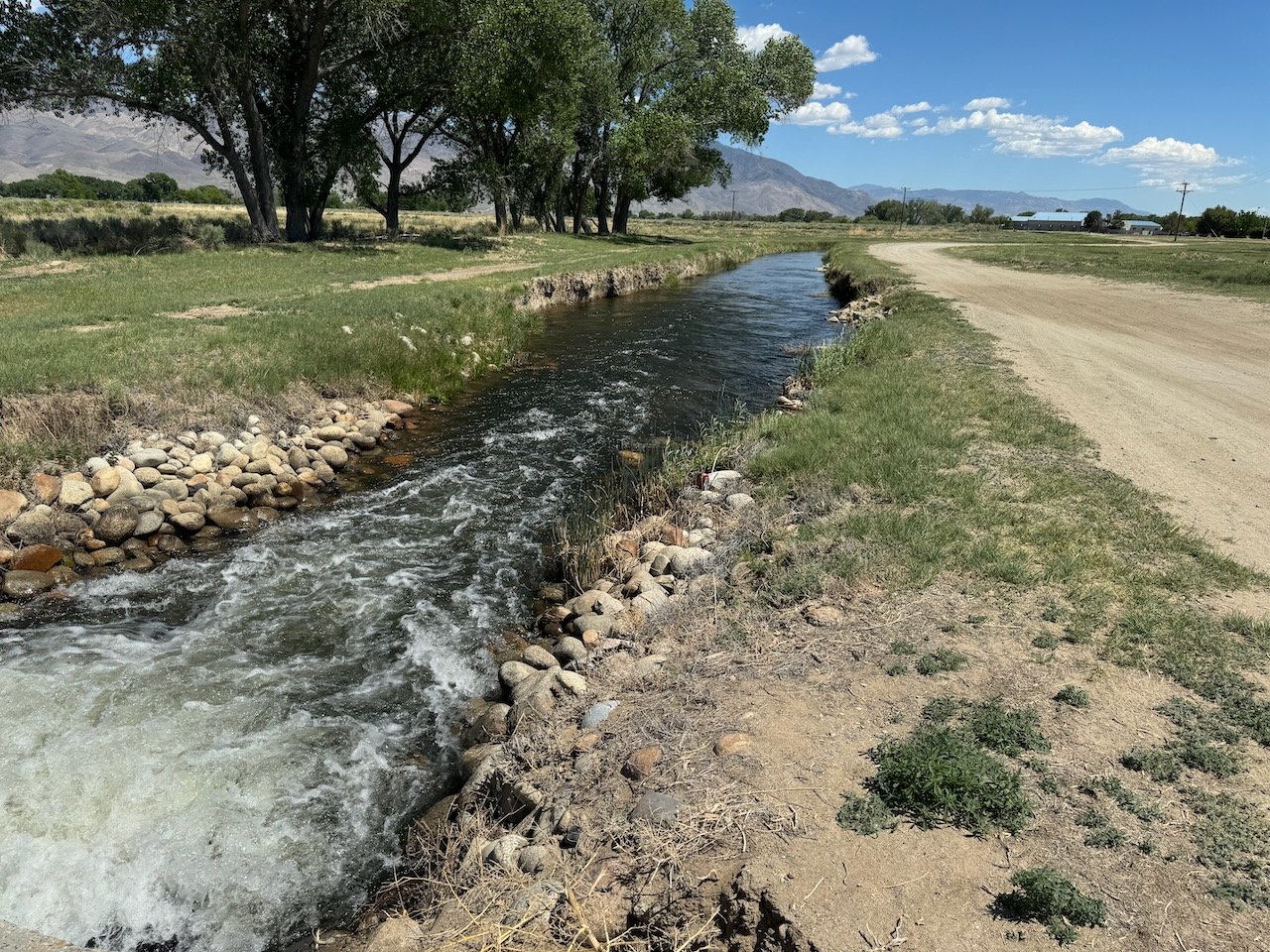It continues to be spring time in the Eastern Sierra. On Monday it was sunny and warm in the morning in the Owens Valley. Monday afternoon on the upper Owens River saw a spring storm role in with rain. In between the spring wind and rain storms the weather has been great. The streams are warming up which has the insects getting active. The trout are responding to the increase in insect activity and are feeding on the nymphs, emerging insects and the adults. There is just something fun about seeing a trout ascend from the depths of the river to engulf an insect off the surface of the stream. When it is the fly fishers dry fly its even better. Mayflies, caddis and midges are the insects hatching that the trout are feeding on
The cutthroats are in the river and if you target the fish resting and feeding in the deep holes and deep pools you will find a cutthroat willing to take your fly..
Lower Owens River
Wild Trout Section:
Flows are fluctuating around 575 CFS which is too high to safely wade. You can nymph at these flows from the banks, but it’s just not fun to fish with the amount of weight needed to get the nymphs bouncing on the substrate. Once the caddis hatch gets into full swing you can catch trout on the surface with dry flies.
Lower Owens River flows are up to 575 CFS which is too high to safely wade and fly fish the spots that are only accessible by wading.
Owens River Gorge
Middle Gorge Power Plant:
When the wind’s not howling the gorge has been fun to fish. With air temperatures in the 80’s the hike out of the gorge is hot. Dry and dropper rig is the preferred method of fly fishing in the gorge. A size 16 Adams parachute with a size 18 bead head flash back pheasant tail nymph or size 16 bead head flash back gold ribbed hare’s ear tied to the bend of the dry fly on a three foot tippet of 5X fluorocarbon is the setup to use in the gorge. It’s warming up and it’s time to keep an eye out for rattle snakes. The stinging nettles are quickly bushing out. It will soon be time to leave the gorge alone tell fall.
The walk into to the Owens River gorge is fine, but it’s the hike out with the warm air temperatures that makes fly fishing the gorge tough.
Hot Creek
Interpretive Site:
Hatches of blue wing olive mayflies have been sporadic with nymphing being the most productive method of catching trout in the creek. Most productive method of nymphing in the creek is with a dry and dropper rig. A high floating visible dry fly is needed for the dry fly. Use stimulators, Adams parachutes and mini Chernobyl ants. For the nymphs bead head flash back pheasant tail nymphs, Frenchie’s, tiger midges and zebra midges are fooling the wild trout of Hot Creek. Hatches of blue wing olives have been sporadic, but if you’re there on the right day a size 20 blue wing olive parachute or Adams parachute will fool the surface feeding wild trout
The road to North Landing on Crowley Lake is closed due to flooded roads around the lake.
Crowley Lake
North Landing:
Access to the north shore of McGee Bay and the North Landing area is closed due to the high levels of the lake. Roads in this area are flooded and inaccessible by vehicle. Until the lake levels subside fly fishing on Crowley Lake is restricted to boat access or shore access from South Landing Marina.
It's nice when you can find a section of Hot Creek to fish all by yourself.
Hot Creek
Canyon Section:
Nymphing is the way to be successful in the canyon right now. A mini Chernobyl ant and a size 18 bead head flash back pheasant tail nymph is a productive setup for fishing the canyon section. Midges and blue wing olive mayfly nymphs are what the trout are feeding on. For the midge nymphs use tiger midges and zebra midges. For the blue wing olive mayfly nymphs use the bead head flash back pheasant tail nymph, Frenchie’s, hot spot pheasant tail nymphs and olive quilldigons. Three feet from the dry fly to the nymph is the perfect Hot Creek distance from the indicator, the dry fly, to the nymph.
Sierra Bright Dot guide Richard Lancaster walking the banks of the upper Owens River looking for cutthroat trout as an afternoon rainstorm rolls in.
.Upper Owens River
Above Benton Crossing Bridge:
Cutthroats continue to offer the fly fisher the opportunity to catch a trophy trout. The cutthroat are getting beat up from spawning and from fighting fly fishers. The run should last another week give or take. Protecting the future cutthroat population is dependent on the cutthroats ability to spawn. As fly fishers we need to ignore fish spawning on redds. A redd is the spawning nest of the trout. You can identify these redds by the freshly cleaned out gravels and the fact that trout are finning on these nests. Cutthroats in deep holes and deep runs are taking size 12 stoner nymphs, size 12 copper Johns, size 12 green/gold Prince nymphs, size 12 gold ribbed hare’s ears variations, size 14 egg patterns, size 12 San Juan worms, size 12 squirmy worms and size 10 mop flies. There are a number of eight to 12 inch wild brown trout and rainbow trout willing to take nymphs and dries. For the nymphs size 18 tiger midges, size 18 zebra midges, size 18 bead head flash back pheasant tail nymph and size 16 bead head flash back gold ribbed hare’s ears. For dry flies use size 16 elk hair caddis, size 18 blue wing olive parachutes and size 16 Adams parachutes. Nymph under an indicator six feet above the bottom fly and use a size one split shot 12 inches above the nymph to get the nymph bouncing on the substrate.
Flows in Bishop Creek Canal are up and the trout are feeding on stoner nymphs, tan scuds, bead head flash back pheasant tail nymphs and tiger midges.
Bishop Creek Canal
Behind Bishop Veterinary Hospital:
Flows have increased and the trout are feeding on nymphs. Olive quilldigons, bead head flash back pheasant tail nymphs, tiger midges, zebra midges, tan scuds and stoner nymphs are fooling the wild brown trout. Algae and weed beds are inhibiting the drift of the nymphs on the substrate. Fish the nymphs in the sandy bottom in between the weed beds.


